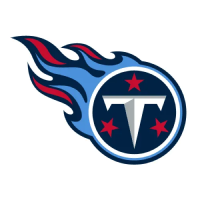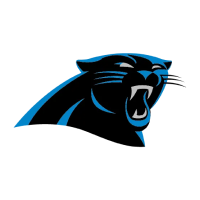The head coach carousel is almost a season of its own. Over the last 20 years, there have been about seven head coach openings in the NFL every year. For as much as we would like to say that kind of turnover isn’t a recipe for success, we love to see it. We are impatient; we crave change; it’s exciting. If the first plan of attack from a head coach doesn’t work, can them; get them out. Surely there is someone who can do better, we say.
But that’s not typically the case. Last offseason, there were 138 permanent coaching hires between 2000-20, according to FiveThirtyEight. Of those 138 hires, 47 have been deemed “successful.” The rest have either qualified as failures (40 of the 138) or still haven’t been around long enough to judge. Since 2010 we’ve seen 21 of those 40 failed hires and only 18 of the 47 successful ones, per FiveThirtyEight’s report. The bottom line is the NFL is changing head coaches more rapidly, and the results are not favorable.
With such change at the top comes change underneath. When head coaches are fired, their staff goes with them. For the purpose of this article, that means their coordinators too. And if you thought the turnover with head coaches was vast, coordinators can come and go even quicker. Sometimes the head coach doesn’t even need to be fired for a coordinator to change cities. If a coordinator performs well, they’re in line for a head coaching gig quicker than ever. If their side of the ball performs poorly, their grace period seems smaller than ever.
Such an event is happening with the Los Angeles Chargers. After going 7-9 in 2020, they parted ways with their head coach Anthony Lynn and hired a young up-and-coming coach Brandon Staley for the role. With the change, the Chargers are going from offensive coordinator Shane Steichen, under Lynn, to Joe Lombardi, under Staley. Los Angeles’ young franchise quarterback, Justin Herbert, will be on his second offensive coordinator in as many years.
It feels like there are plenty of examples of this, which isn’t really as encouraging as it sounds. In fact, let’s go down the list of quarterbacks selected in the top 10 since 2015 and see how many had coordinator changes from Year 1 to Year 2.
The 2015 class went two-for-two with Jameis Winston and Marcus Mariota seeing early coordinator changes. A year later, Jared Goff did as well. From 2017, Mitchell Trubisky makes the list. In 2018, Baker Mayfield, Sam Darnold, and Josh Rosen all saw coordinator changes going into their second seasons. From 2019, there’s Daniel Jones; and add Tua Tagovailoa’s name to this list of 2020 quarterbacks looking at coordinator changes going into their second season along with Herbert. That’s 10 of out the 15 quarterbacks selected in the top 10 of the last six NFL drafts who have had multiple coordinators within their first two seasons. Carson Wentz, Patrick Mahomes, Josh Allen, Kyler Murray, and Joe Burrow are the only ones who didn’t qualify; but 75% did—that’s mad.
Now, let’s see whose changes actually made a difference. For Mariota and Winston, there were varying elements to why each didn’t succeed; both went beyond just the two coordinators and are no longer with the teams that drafted them. Goff changed coordinators but got head coach Sean McVay in the process. That clearly worked for him, even though he’s on to a different team. Mayfield switched coordinators a few times but has Kevin Stefanski on the third time around and that seems to be working. As for Darnold and Rosen, their chapters with the teams that drafted them are over. The jury is still out on Jones, and, of course, we can’t judge Tagoaviloa or Herbert yet. So, there are maybe two success stories in Goff and Mayfield, but that’s about it in the last six years.
All-in-all teams make changes to get better. It’s in an attempt to not waste the important early years of highly drafted quarterbacks. It’s understandable why teams feel the pressure to move on from someone who they don’t believe is right; when they know someone isn’t their answer, it is detrimental hanging onto them. But there is something to be said about giving coaches time to settle in and find their groove within organizations. It just doesn’t seem they’re given that chance more often than not, particularly when it comes to Black coaches.
Ultimately, the root of the problem is general managers and owners need to do a better job of hiring. The constant turnover doesn’t have a good track record. We’ll see which side Herbert’s name will be on a few years from now.
Filed In
Related Articles
NFL Draft
Arik Gilbert Doesn’t Need Big Workload To Be A Top NFL Draft Pick
- Aug 22, 2022
NFL Draft
2023 NFL Mock Draft: Marino 1.0
- Aug 22, 2022
Written By


































